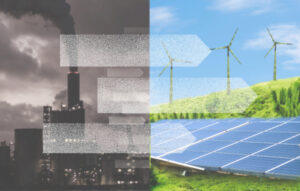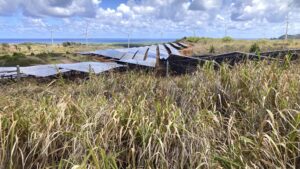Bionic Leaf Could Photosynthesize an Energy Revolution
Renewable energy experts and microbiologists have teamed up to create a super-efficient artificial leaf that uses photosynthesis to produce carbon-neutral liquid fuels.
By Tim Radford / Climate News Network

Exploitation of sunlight by natural maple leaves is only a 10th as effective as with the new artificial leaf. (Martin LaBar via Flickr)
This piece first appeared at Climate News Network.
LONDON — Scientists in the US claim to have beaten nature at its own game. They have created a “bionic leaf” that exploits sunlight to create biomass— and they say their invention is now 10 times more effective than an oak or maple leaf.
Two separate laboratories at Harvard University have co-operated to devise, enhance and test a system that uses sunlight to split water molecules and feed the hydrogen to bacteria that then produce liquid fuels. The next task is to scale up the experiment to produce carbon neutral fuels to combat climate change.
“This is a true artificial photosynthesis system,” says Daniel Nocera, a leading researcher in renewable energy who is professor of energy at Harvard. “Before, people were using photosynthesis for water-splitting, but this is a true A-to-Z system, and we’ve gone well over the efficiency of photosynthesis in nature.”
Photosynthesis was perfected by the plant world over more than 3 billion years of evolution. It drives the entire living world and it is the primary source of all fossil fuels.
Ancient sunshine
Climate change became a problem only when humans started to extract ancient sunshine in the form of coal, oil and natural gas, stored in the Carboniferous rocks, and put it back in the atmosphere.
Just as wood fires from felled timber make no difference to the atmosphere’s carbon dioxide levels — because the same forest that shelters the fallen tree will absorb it again — so biofuels converted from surplus maize or sugarcane should, in theory, make no difference to global warming.
So the idea of what the Harvard team call “bionic leaf 2.0” is an attractive one. It could deliver liquid fuels in convenient form that would make no difference to the planet’s overall carbon budget. In effect, it could bypass the vegetation stage.
“It’s an important discovery.
It says we can do better
than photosynthesis.”
Chemists and engineers the world over are racing to exploit human ingenuity and deliver brilliant solutions, including artificial leaves that can capture carbon dioxide. The challenge is to do so effectively, cheaply and on a massive scale.
Which is why Professor Nocera’s lab teamed up with microbiologists led by biochemist and systems biologist Pamela Silver, of Harvard Medical School.
The scientists report in Science journal that they have devised a hybrid system based on cobalt-phosphorus alloy catalyst partnered with bacteria called Ralstonia eutropha, which splits water into oxygen and hydrogen at low voltages.
Organic chemistry
The microbes consume the free hydrogen and, in the presence of oxygen and carbon dioxide, begin some organic chemistry. So far, the system has made isobutanol and isopentanol, and even a bio-plastic precursor product.
The Harvard scientists say their bionic leaf converts solar energy to biomass with an efficiency of 10%. The fastest-growing plants do the same with an efficiency of 1%.
What works in a laboratory may be tricky to translate into large-scale production, but the researchers are confident they have something that works.
Professor Nocera says: “It’s an important discovery. It says we can do better than photosynthesis. But I also want to bring this technology to the developing world as well.
“If you think about it, photosynthesis is amazing. It takes sunlight, water and air — and then look at a tree. That’s exactly what we did, but we can do it significantly better, because we turn all that energy into a fuel.”
Tim Radford, a founding editor of Climate News Network, worked for The Guardian for 32 years, for most of that time as science editor. He has been covering climate change since 1988.
Your support matters…Independent journalism is under threat and overshadowed by heavily funded mainstream media.
You can help level the playing field. Become a member.
Your tax-deductible contribution keeps us digging beneath the headlines to give you thought-provoking, investigative reporting and analysis that unearths what's really happening- without compromise.
Give today to support our courageous, independent journalists.






You need to be a supporter to comment.
There are currently no responses to this article.
Be the first to respond.